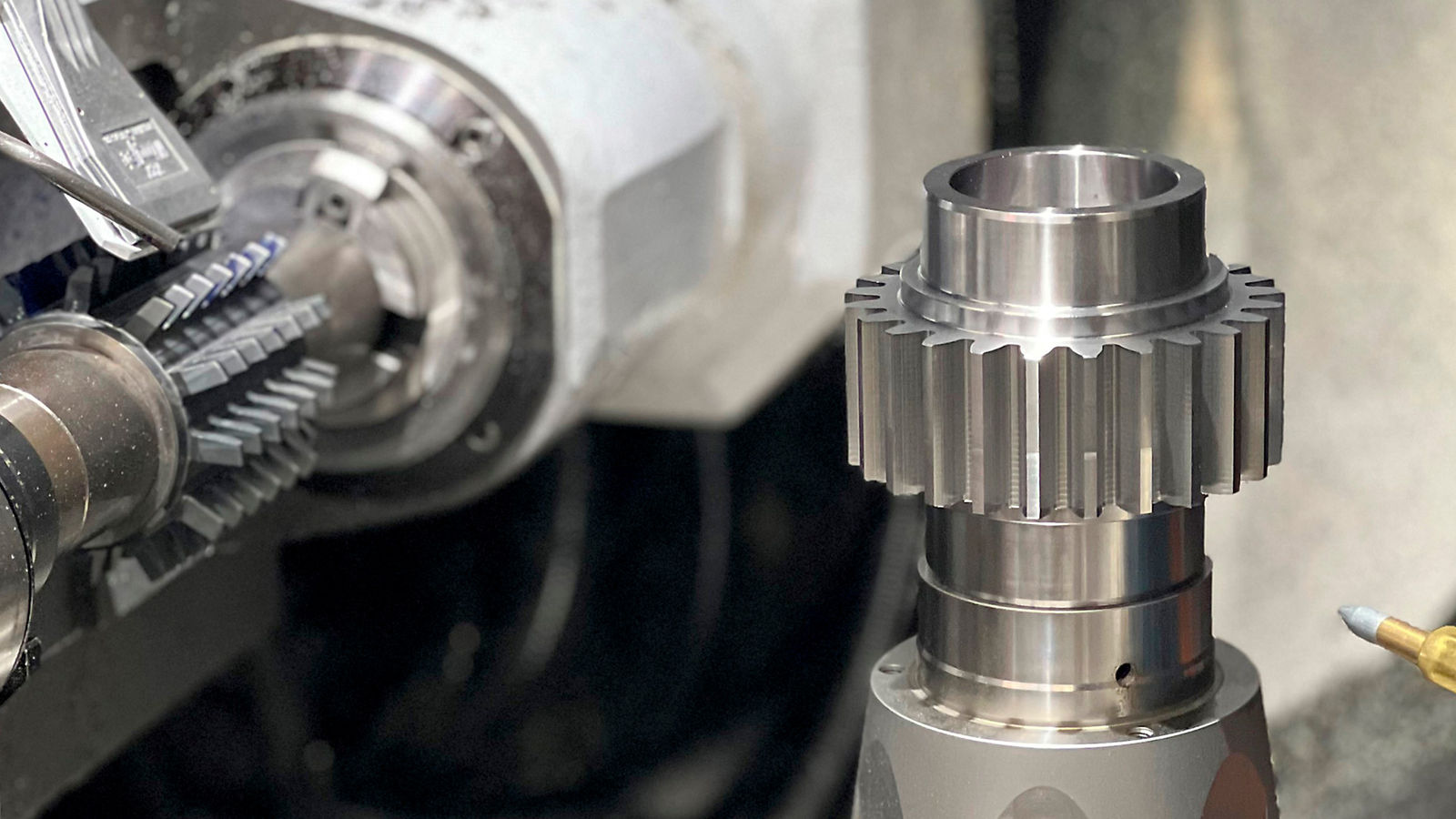The Importance of Workholding Flexibility
Automated cell delivers “lights-out” hobbing operations at Precision Gears with assistance from Hainbuch mandrels
Finished gear wheel on mandrel after hobbing.
The 67,000 sq. ft. facility occupied by Precision Gears Inc. in Pewaukee, WI, contains a full range of gear manufacturing equipment to meet the varied customer demands of the many industries it serves. Founded in 1919, the company possesses both the technologies and experience to efficiently serve the multiple requirements of manufacturers in fields as varied as agriculture, lawn and garden, foodservice, power transmission construction, pumps, and others.
According to Dalton Campbell, manufacturing engineer at Precision Gears, “We manufacture virtually all types of gears in all types of materials. Production can involve CNC turning, milling, broaching, grinding, and ancillary services. Although we typically run lots from 100 to 2,500 pieces, we recently received an order for a much larger quantity and expect to be handling higher production runs in the future.”
The complex requirements of gear production, combined with the shortage of qualified people, caused Dalton to explore the possibility of incorporating an automated manufacturing installation. Prior to designing the cell, several parameters were established.
“Our typical sizes range from 1 to 5 inches,” Campbell said. “As a result, the demand for flexibility was key to our plan. Also, we wanted to be certain that the various components were mutually compatible and capable of consistently meeting our quality standards. Although our typical tolerances range from .001 to .002, the diversity of our customer base means that we might occasionally have to meet tighter standards. It was also determined that the automated unit would initially be used for the production of external gears only.”








